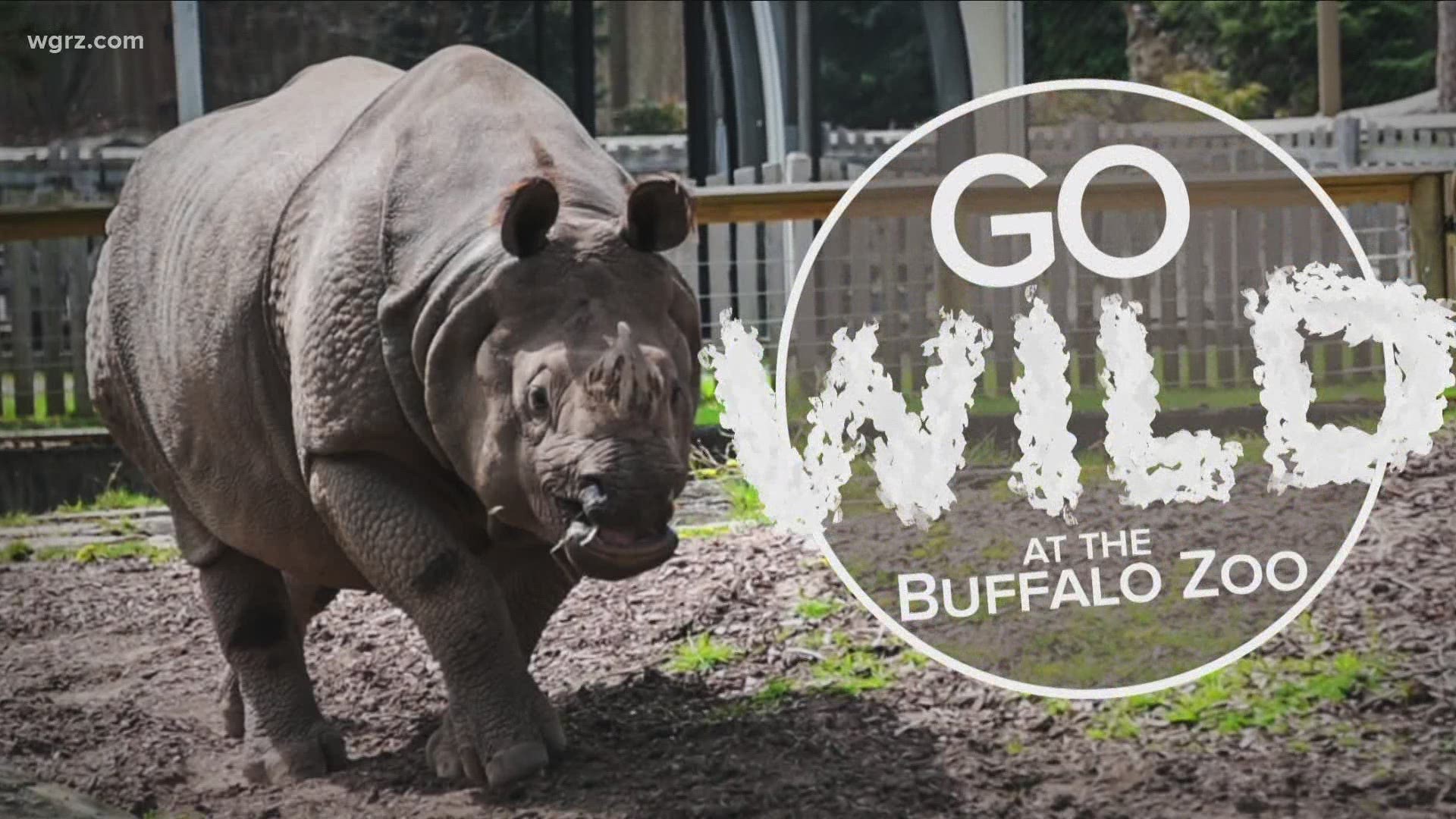BUFFALO, N.Y. — It's time to Go Wild! Wild at the Buffalo Zoo that is.
Last week, the Buffalo Zoo made an exciting announcement that Toshi, the one-horned Indian rhino, is pregnant.
In part two of Maria Genero's series, you will meet the other species of rhino that resides at the zoo.
The Buffalo Zoo is one of only 26 zoos that keep more than one species of rhino, the Black and Indian, and each needs its own habitat and diet.
Tashi is a long-horned Indian rhino, and Lulu is a Black rhino. They might look similar, but they're not. There are five different species of rhino in the world: white and black, from Africa, the Indian rhino from India, and the Javan and Sumatra, both from Indonesia.
Black rhinos, like LuLu, can't tolerate any iron in their diet. Indian rhinos need it in theirs.
Rhinos are herbivores. Carrots, sweet potatoes, lettuce, and celery are favorites, along with grains. Depending on species, 50 to 100 pounds of food is fed daily to the rhinos.
What other differences are there?
The Indian rhino, which weighs between 4,000 to 6,000 pounds, has one horn. They live on swampy land and love to wallow in muddy water. A pool and soft bedding will be found in their enclosure.
At 2,000 to 3,000 pounds, the Black rhino has two horns. They are not much for water, but they do love mud, which keeps their skin cool and bug-free.
Their enclosure has a harder surface for their feet, which simulates the African soil.
One thing they have in common is Rhinos are solitary animals. Except for breeding and calf rearing, you will mainly find them alone in the wild.
When you see a rhino, you might think it is related to an elephant or hippo. But actually, its closest relative is the horse or zebra.
Externally, they are nothing like a zebra. Their skin is tough and leathery, except the inner folds, which are soft and warm. They also have an excellent sense of smell and hearing, but not sight.
The horn is rough and feels like a coconut shell. They have large grinding molars to chew vegetation. The Indian Rhino has two razor-sharp incisors that they use for defense, and each day, from tooth to toe, each rhino is examined to ensure its health.
If you missed part one of Maria's series Go Wild at the Buffalo Zoo, you can watch it here:


